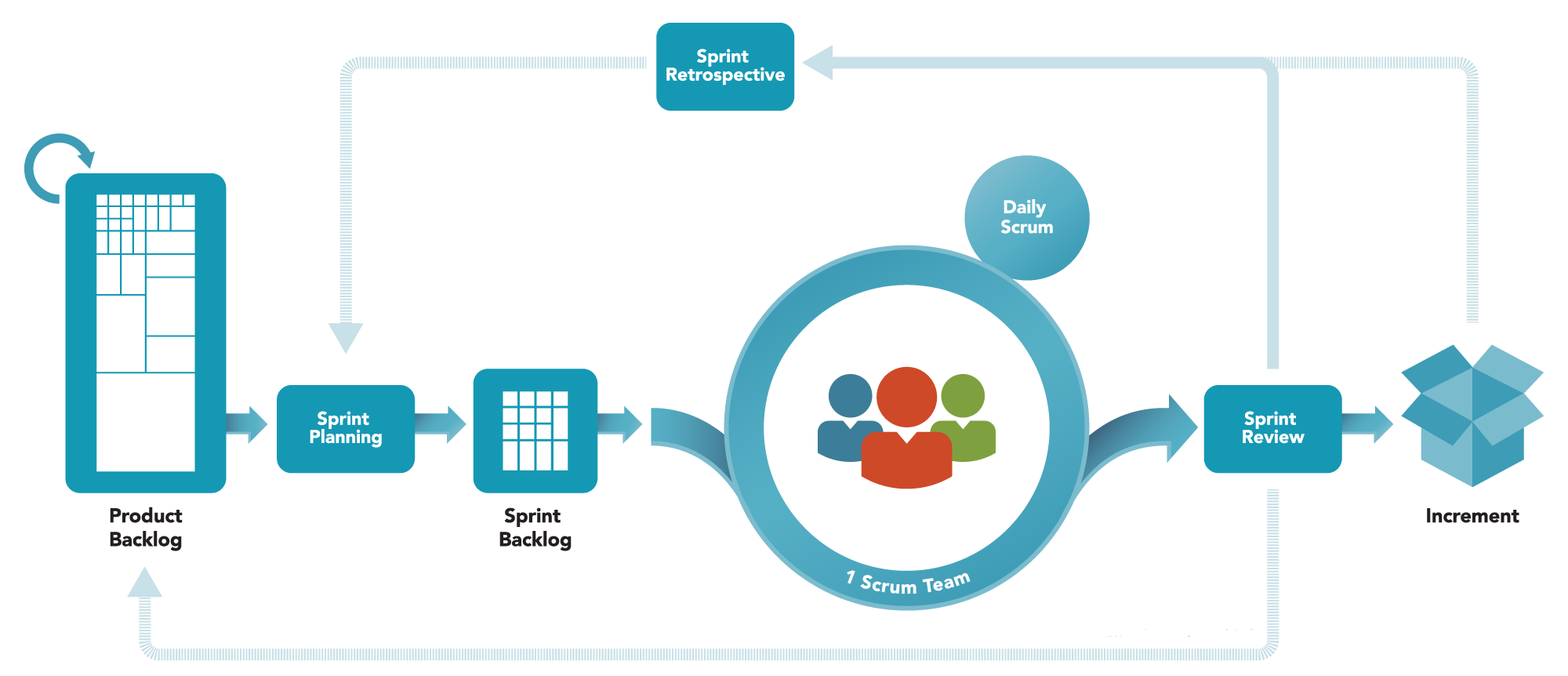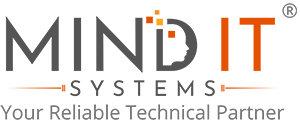
What are the 5 Major Benefits of Agile Development?
A key characteristic of agile development is its adaptability and evolution. Hence, it is excellent for enterprises/companies that want to have better project lifecycle predictability, improve on wastage reduction, increase the quality of their finished product, and streamline their development process.
As per recent stats, agile projects have a success rate of 64%, while the projects under the completing approach, basically referred to as waterfall, have a success rate of 44%. As a result, the agile approach is nearly 1.5x more successful than the waterfall projects.
Although agile is a project management methodology, its core tenet of incremental progress applies to business management and expansion.
This article aims to give you a deeper understanding of the four key advantages of agile development, challenges faced while using the Agile style, and when it’s decisive to use it.
Let’s dig deeper now!
Before progressing further, let us first discover the differences between the Agile and traditional development models.
Traditional Vs. Agile Development Model
Traditional Model: Simply put, “traditional web development,” often referred to as a waterfall model or water method, differs from the Agile product management model. The waterfall is a step-by-step procedure, dependent on bulk requirements being clear right at onset, and hence less adaptable and iterative. In addition, it is a sequential model that includes different stages–requirements, analysis, design, execution, testing, and maintenance.
Agile Development Model: The agile approach needs short iterative planning, thus, making it easy to adopt any strategy when any changes are necessary. Continuous improvement and feedback throughout the process can be helpful for project management. Compared to the traditional model, the agile product development model comes with the benefits like visibility, adaptability, and value at the beginning of the project. It is a more flexible approach geared to customers’ requirements.
The principles outlined in the manifesto of Agile product development guide the elegant methodological style. Its primary goal is to satisfy customers by delivering valuable software early and often, assuming that requirements can be evolutionary in nature.
Using agile software engineering strategies instead of more conventional ones has several noticeable advantages.
What are they? Check it out in the following section.
5 Significant Benefits of Agile Software Development (ASD) Method
Helps to build the highest-quality end products:
The core concept of agile development is that you have complete control over every aspect of the process at any step of the implementation or development cycle. Since the quantum of work on which the control is applied is shorter, its simply results in lesser black holes and surprises, and provides better chances of correction in next cycle. In any cycle, the Agile approach enables you to track the quality, make necessary improvements, and produce a ready-to-work highest-quality end product with the fewest possible faults.
Ensures greater customer satisfaction rate:
With the Agile software development methodology, the product owner is actively involved in the development process, including making revisions, bug fixing, and additional cycles. This is a key success contributor, and missing this in any methodology is one of the primary points of failure. With Product owner steering the entire process, both the customer and the development team can see the results and deviations and can jointly identify the areas of improvement.
Allows to keep an eye on most pertinent metrics:
Traditional businesses frequently use rigid software engineering processes than flexible ones, resulting in inferior products. In addition, rigid methodologies often block considerable time and resources, and if anything goes wrong, it can result in very expensive mistakes. While utilizing agile development, the product owner can determine the project’s timing and budget along with pace. Your development team might provide an estimated cost for the project and then can work on smaller pieces so that accurate cost can be planned and incurrent around the smaller pieces. Also, you can receive a daily update of the Sprint Burnout Chart to get precise metrics on how the agile product development team is performing throughout each sprint.
Risks become more manageable:
One of the primary strengths of the Agile software development style is its flexibility, which reduces the possibility of a project failing. You can develop and build on your project, starting with the first sprint, as your project always has a usable result. On top of that, Agile enables organizations to fund projects with minimum up-front investment and to receive cash early through self-funded projects.

Quick return on investment:
Business owners frequently struggle with long delivery cycles, notably in industries that are expanding quickly. Since Agile development is iterative and is geared towards shipping incremental delivery, early development gives you the minimum viable product which can be a fully working, no frills, market-ready product in a few revisions. This helps you in going to market faster, and then you can re-invest your learnings from market or early adoption of product subsequently in the roadmap, giving you a constant deliver and evolve cycle.
When and how to use the Agile Model?
Agile development model—When it’s decisive to use it?
- When consumers’ needs are uncertain, adopting agile project management can be sensible because it allows you to adjust the requirements in response to your customer’s demands.
- The agile development method is essential when your product needs to be updated often with new features. You can frequently add adjustments to the Agile style, and the cost of adopting recent changes can also be lesserl.
To get started on an Agile project, planning is required with the assumption that changes will come and the growth path will bring evolution. You can break project down into several phases to involve continual teamwork with the stakeholders and constant growth at each stage.

The agile model recognizes that business and IT requirements are ever-evolving, which makes end users’ needs unpredictable. Utilizing Agile methodology can allow businesses to add or remove features based on the information gathered to ensure that the final product which customer gets, precisely satisfies their wishes and specifications.
Problems encountered while using the Flexible Agile style.
Every endeavor comes with its risks and challenges. There are some limitations to Agile. These includes:
- Need extra training & skills: To be successful, agile requires extensive training and expert application. Most businesses sometimes miss this while executing; thus, they try to do tasks swiftly and with minimal additional effort. This can result in failures, as it’s expected that a minimum level of maturity is displayed by each member in thinking processes, approach selections, and planning.
- Organizational / Project Team restructuring: For the Agile strategy to succeed, some corporate reorganization or stakeholder alignment may be necessary. The development team must work in a collaborative, trust-based manner with business stakeholders. For certain businesses, this may entail removing roadblocks that prevent or make it harder to achieve the desired results.
- Extensibility: Large-scale project implementation of the Agile methodology is frequently tricky and time-consuming. Scrum-of-Scrums, LeSS, and SAFe are a few approaches, but they are more complex all-encompassing resolutions.
- Integration with design or program operation: When a planned strategy is necessary for a project to reach a particular degree of stability, there may be better choices than agile. However, there are various methods to combine Agile with more conventional plan-based methodologies and to determine the appropriate amount of Agile/Scrum for the circumstance.
Final Say
An Agile product development approach for your business can help you develop swift and innovative solutions and free you to make strategic moves and progress in your company’s growth.
Ultimately, it is the quality end product that benefits your customers and helps you to build a successful business. Agile allows getting the best workable software with ease.
To get the most out of Agile, contact software development companies with proven track records like Mind IT®.
As a leading software development company, we have been serving businesses worldwide over the years with innovative custom web development services. Our Agile development methodologies in product development have helped businesses to achieve their objectives and needs through practical and timely solutions.
About the Author

Sujoy Roy
(Head – Digital Marketing)
From my teenage time, I had a quench to solve problems and loved leadership. Starting my career in relation management, ignited my passion for managing people. While managing I realized technology needs to be incorporated to keep pace with the changing world & do my work efficiently.

